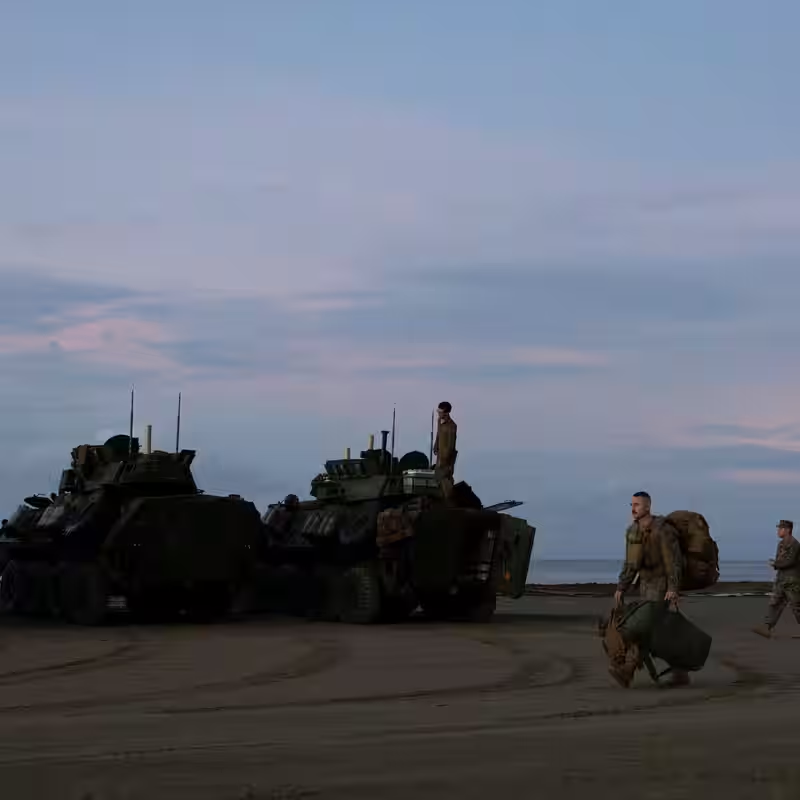The Caribbean Sea, once a symbol of tropical tranquility, is now the stage for a high-stakes geopolitical drama. The Trump administration has dramatically escalated its campaign against Venezuelan President Nicolás Maduro, deploying a formidable naval armada and taking direct military action that has the region holding its breath. But what is the true objective behind this show of force, and how close are we to an actual conflict?
Table of Contents
- Trump’s Caribbean Show of Force
- Maduro’s Response: A Nation on War Footing
- The Drug Cartel Connection
- What Does This Mean for the Region?
- Sources
Trump’s Caribbean Show of Force
The Trump administration has made its most aggressive move yet against the Maduro regime by significantly bolstering its military presence in the Caribbean. This isn’t just a routine patrol; it’s a clear and deliberate signal. The U.S. Navy has added the destroyer USS Stockdale (DDG-106) to its fleet in the region, bringing the total number of American surface warships to eight .
According to experts and sources within the administration, a primary goal of this naval deployment is to exert maximum pressure on the Maduro government . This pressure campaign includes not only the visible threat of military power but also a series of recent sanctions and designations aimed at crippling the regime’s financial lifelines. The administration has also taken the extraordinary step of attacking boats in the Caribbean Sea, an action that moves beyond economic sanctions into the realm of direct military engagement .
Maduro’s Response: A Nation on War Footing
Caracas has not taken this threat lying down. In a dramatic and sweeping declaration on September 30, 2025, President Nicolás Maduro placed Venezuela’s entire military on a wartime footing, announcing a state of “external emergency” . This move effectively mobilizes the country’s armed forces and signals that Maduro is preparing for a potential, direct confrontation.
Maduro’s government has framed the U.S. actions as an act of imperialist aggression, using the crisis to rally domestic support and consolidate power. The question now is whether this is a defensive posture or a prelude to a more aggressive stance from Venezuela.
The Drug Cartel Connection
While the official narrative from Washington centers on restoring democracy and combating the humanitarian crisis in Venezuela, a critical underlying factor is the nation’s role as a hub for international drug trafficking. The Trump administration has long accused the Maduro regime of being complicit with, and even actively collaborating with, powerful drug cartels.
The recent attacks on boats in the Caribbean are widely believed to be part of a broader strategy to disrupt these illicit supply chains. By targeting maritime routes, the U.S. aims to strike at a key source of revenue for both the cartels and the Venezuelan state, thereby weakening Maduro’s grip on power from the inside out.
What Does This Mean for the Region?
The escalation has created what experts describe as a “more volatile and risk-prone environment” in the Caribbean for 2025 . The presence of eight U.S. warships and a Venezuelan military on high alert creates a dangerous flashpoint where a single miscalculation or accident could spiral into a full-blown international incident.
Neighboring countries are watching the situation with deep concern, worried about the potential for spillover effects, including a massive refugee crisis or the destabilization of regional security. The world is now waiting to see if this is a carefully calibrated pressure tactic that will force a political solution, or the first steps toward a conflict that nobody truly wants.
Sources
- The New York Times: Trump, Drug Cartels, Venezuela and War: What We Know
- Expert and administration sources on US Caribbean naval deployment
- Venezuelan President Nicolás Maduro’s state of emergency declaration
- U.S. Navy deployment of USS Stockdale and other warships
- Briefing on escalating US operations in the Caribbean Sea




